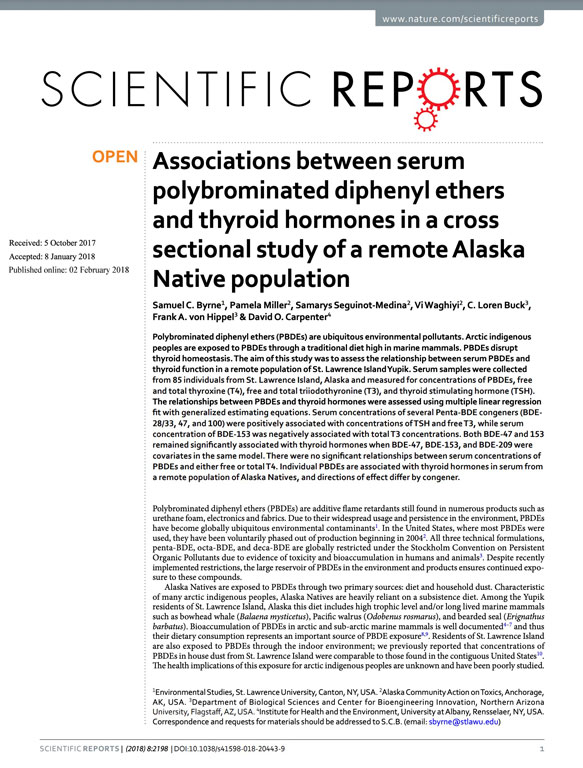Associations between serum polybrominated diphenyl ethers and thyroid hormones in a cross sectional study of a remote Alaska Native population
About/Abstract
Polybrominated diphenyl ethers (PBDEs) are ubiquitous environmental pollutants. Arctic indigenous peoples are exposed to PBDEs through a traditional diet high in marine mammals. PBDEs disrupt thyroid homeostasis. The aim of this study was to assess the relationship between serum PBDEs and thyroid function in a remote population of St. Lawrence Island Yupik. Serum samples were collected from 85 individuals from St. Lawrence Island, Alaska and measured for concentrations of PBDEs, free and total thyroxine (T4), free and total triiodothyronine (T3), and thyroid stimulating hormone (TSH). The relationships between PBDEs and thyroid hormones were assessed using multiple linear regression ft with generalized estimating equations. Serum concentrations of several Penta-BDE congeners (BDE28/33, 47, and 100) were positively associated with concentrations of TSH and free T3, while serum concentration of BDE-153 was negatively associated with total T3 concentrations. Both BDE-47 and 153 remained significantly associated with thyroid hormones when BDE-47, BDE-153, and BDE-209 were covariates in the same model. There were no significant relationships between serum concentrations of PBDEs and either free or total T4. Individual PBDEs are associated with thyroid hormones in serum from a remote population of Alaska Natives, and directions of effect differ by congener.
Keywords/Info
- PBDEs
- Biomarkers
- Thyroid diseases

